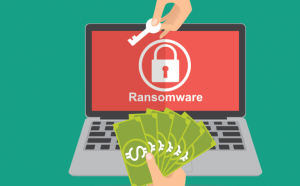
In the increasingly digital landscape of today, cyber threats like ransomware attacks have become a harsh reality for individuals and organizations alike. Ransomware attacks can be devastating, locking users out of their own systems and demanding a hefty ransom for the restoration of access. However, a well-prepared and strategic response can significantly mitigate the impact of such an attack. In this article, we’ll outline a comprehensive guide on how to respond effectively to a ransomware attack.
Stay Calm and Assess the Situation
The discovery of a ransomware attack can be alarming, but it’s crucial to remain composed. Panic can lead to hasty decisions that may exacerbate the situation. Begin by isolating the affected systems from the network to prevent the malware from spreading. This initial step will contain the damage and provide you with a clear view of the extent of the attack.
Confirm the Ransomware Infection
Not all cyber incidents are ransomware attacks. Confirm the presence of ransomware by identifying the characteristic signs, such as encrypted files, ransom notes, and changes to file extensions. It’s important to establish the type of ransomware involved, as different variants may require different response strategies.
Notify Relevant Stakeholders
Quick communication is essential. Notify your internal IT team, management, and any other relevant parties about the attack. If personal or sensitive data is compromised, consider involving legal experts to ensure compliance with data protection regulations and to manage potential fallout.
Do Not Pay the Ransom
Paying the ransom is not a guarantee that you’ll regain access to your data, and it often encourages cybercriminals to continue their malicious activities. Law enforcement agencies worldwide strongly discourage paying ransoms. Instead, focus on restoring your systems through more effective means.
Restore from Backups
Regularly updated and secure backups are your best defense against ransomware attacks. If your data is backed up, you can restore your systems to a pre-attack state without having to rely on the attackers’ demands. Make sure your backup strategy includes both on-site and off-site backups to ensure redundancy.
Seek Professional Assistance
Engage with cybersecurity experts who specialize in ransomware incidents. They can help you assess the damage, identify vulnerabilities, and develop a strategy for recovery. Their expertise can also help you prevent future attacks by addressing weaknesses in your security infrastructure.
Collaborate with Law Enforcement
Report the attack to law enforcement agencies, such as your local police department and appropriate cybercrime units. While the chances of apprehending the attackers may be slim, reporting incidents aids law enforcement in tracking and understanding the evolving landscape of cyber threats.
Implement Preventive Measures
Once you’ve mitigated the immediate impact of the attack, focus on preventing future occurrences. Strengthen your cybersecurity defenses by:
- Regularly updating software and operating systems to patch vulnerabilities.
- Educating employees about phishing and safe online practices.
- Implementing multi-factor authentication (MFA) for enhanced account security.
- Employing advanced security solutions like intrusion detection systems and endpoint protection.
Conduct a Post-Incident Review
After the situation is under control, conduct a thorough review of the attack and your response. Identify areas where your security measures were effective and areas where improvements are needed. This evaluation will guide future efforts to enhance your cybersecurity posture.
In conclusion, responding to a ransomware attack requires a clear-headed, well-coordinated approach. Staying prepared with robust cybersecurity measures, effective data backups, and a well-defined incident response plan is essential for minimizing the impact of such attacks. By following the steps outlined in this guide, you’ll be better equipped to defend against ransomware threats and ensure the continuity of your operations.